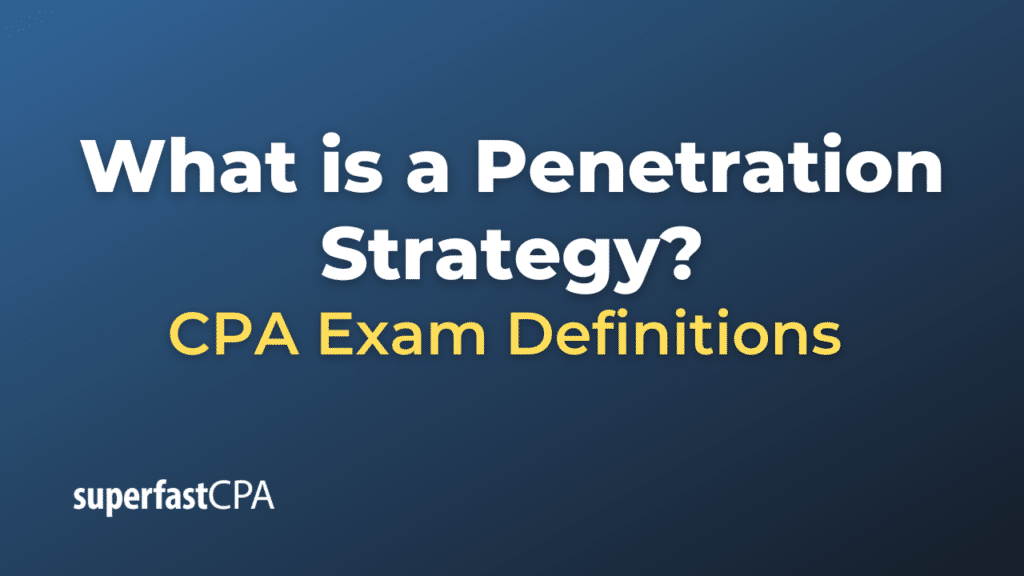Penetration Strategy
A penetration strategy is a marketing approach where a business attempts to gain a larger market share by attracting a large number of customers to its product or service. The strategy typically involves pricing, advertising, and other promotional tactics to increase visibility and appeal to a broad customer base. There are two main types of penetration strategies:
- Market Penetration: In this strategy, a company seeks to gain greater market share for its existing product or service in its current market. This can be achieved by attracting a larger customer base, enticing customers from competitors, or increasing the usage among existing customers. Tactics might include competitive pricing, advertising, sales promotions, or improved customer service.
- Product Penetration: This strategy involves introducing a new product in an existing market. The goal is to achieve rapid market acceptance and market penetration. Tactics might include product innovation, creating differentiated product features, or aggressive marketing and pricing strategies.
An example of a penetration strategy is the introduction of a new software product. The company may decide to offer a free trial version of the product, heavily advertise its unique features, or price it lower than competitor products to attract users. Once the product gains acceptance and the customer base grows, the company may introduce premium features for a fee, raise the price, or implement other monetization strategies.
It’s important to note that a penetration strategy requires a strong understanding of the market, competitors, and customer behavior. Furthermore, it often involves an initial investment in marketing and lower price points, with the expectation of longer-term customer loyalty and profitability.
Example of a Penetration Strategy
Let’s look at an example using the market penetration strategy:
Consider a hypothetical coffee shop called “Java Jive” located in a city with a highly competitive coffee market. Java Jive already has a dedicated customer base, but they want to increase their market share and stand out from competitors.
To do this, Java Jive implements a market penetration strategy:
- Competitive Pricing: Java Jive lowers the price of their most popular drinks slightly below the average price of their competitors. This makes them more attractive to price-sensitive customers.
- Loyalty Program: Java Jive introduces a loyalty program that offers customers a free drink after purchasing a certain number of drinks. This encourages repeat business and increases customer retention.
- Increased Advertising: Java Jive invests in local advertising and boosts their social media presence to increase their visibility. They also highlight unique aspects of their coffee shop, such as their commitment to using locally sourced ingredients and offering live music on weekends.
- Improved Customer Service: Java Jive emphasizes training for their baristas to ensure high-quality service. They want to create an atmosphere where customers feel valued and appreciated.
- Community Engagement: Java Jive organizes and sponsors local events to engage with the community and build a positive brand image.
With these steps, Java Jive aims to attract more customers from their competitors, increase the frequency of visits from their existing customers, and improve their overall market share in the city’s coffee scene. This is a simplified example, but it gives an idea of how a market penetration strategy could work in a real-world scenario.













